How to grow and care Sansevieria Trifasciata indoors
Written by Maggie
Oct 22 2021
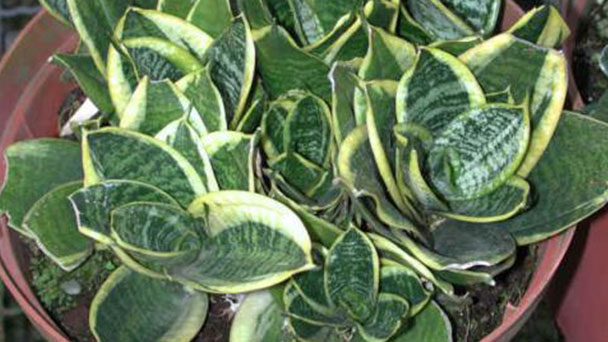
With their spiky, sculptural leaves and low-key requirements, Sansevieria Trifasciata is one of the least annoying vegetation to develop indoors. They thrive on minimal interest and with ease adapt to new places and conditions. Learning how to develop and care for Sansevieria Trifasciata helps make sure your flowers continue to be at their spiky best. Just observe these fundamentals and you are on your way to Sansevieria Trifasciata success:
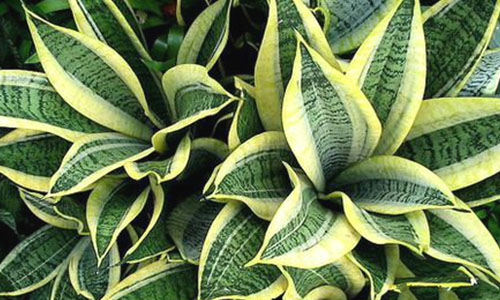
Picking Sansevieria Trifasciata for growing indoors
Sansevieria Trifasciata is native to arid areas of Africa, the place mild is variable and humidity is low. If that sounds like your house, you are now not alone. A Sansevieria Trifasciata plant may additionally be the ideal plant for you to grow.
Until recently, these fashionable plant life have been acknowledged via the botanical identity Sansevieria, however scientists reclassified the group. Sansevieria Trifasciata flowers now belong to the genus Dracaena. But do not worry, many human beings — along with plant professionals — nonetheless use sansevieria as the plant's frequent name.
When deciding on Sansevieria Trifasciata life for indoors, the selections are numerous. All Sansevieria Trifasciata flowers have comparable needs, so sense free to explore. Some of the most famous snake flora consist of the following types:
Common Sansevieria Trifasciata has erect, sword-like inexperienced leaves with horizontal grey-green stripes and sharp leaf tips.
Variegated Sansevieria Trifasciata has thick, narrow, mottled inexperienced leaves with vivid yellow leaf margins.
Bird's nest Sansevieria Trifasciata is a dwarf shape that stays much less than 6 inches tall. The short, spiky leaves structure a nest-like rosette.
Moonshine Sansevieria Trifasciata is additionally regarded as a silver snake plant. It has ethereal, faded silver-green leaves.
Cylindrical Sansevieria Trifasciata has rounded, cylinder-like leaves instead of flattened, sword-like leaves.
Sansevieria Trifasciata advantages lengthen past splendor and style. NASA and college researchers have proven these flora assist filter pollution from air.
Be conscious that Sansevieria Trifasciata is poisonous to puppies and cats if ingested.
Train your pets to keep away from houseplants and in no way bite or devour foliage from any plant — indoors or out. If your pet eats a snake plant leaf, contact your vet proper away.
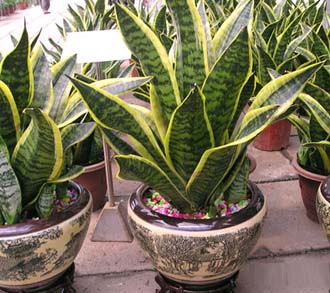
Growing Sansevieria Trifasciata indoors
Some people say that Sansevieria Trifasciata do first-class when neglected. That's an exaggeration, however they do flourish with very little care. Keep their arid African roots predominant in mind, and you are midway to best care. When growing Sansevieria Trifasciata indoors, always use coarse, fast-draining potting soil and containers with right drainage holes. Then meet these easy snake plant requirements:
Light – Sansevieria Trifasciata life is versatile, however keep away from mild extremes for fine results. They tolerate terrible mild and extended shade, however they select strong, filtered light. Warm, sunny areas blanketed from direct warm solar are ideal.
Water – Sansevieria Trifasciata is very drought tolerant, so underwatering is rare. But overwatering is a speedy route to root rot. During the lively summer time developing season, water solely when the soil feels dry about three inches deep. Then water thoroughly. When growing Sansevieria Trifasciata indoors during winter, water solely as wanted to maintain leaves searching and feeling firm.
Fertilizer – Because Sansevieria Trifasciata is native to terrible rocky soil, keep away from overfertilizing. A top rate plant meals such as Pennington UltraGreen All Purpose Plant Food 10-10-10 fed as soon as every spring offers your Sansevieria Trifasciata the primary, secondary and micronutrients it needs. Then it continues gently feeding for up to 4 months.
Repotting – Sansevieria Trifasciata flowers are gradual growers that hardly ever want repotting. When your container is overflowing with leaves or roots showing up from drainage holes, it is time to repot. Used as directed, Pennington UltraGreen Plant Starter with Vitamin B1 offers newly repotted vegetation with really helpful vitamins and reduces transplant shock.
Propagating – Repotting is the ideal time to begin new Sansevieria Trifasciata. Division is the best way to propagate. Gently pull the plant roots apart to divide the root ball. Then plant the character rooted rosettes, and you have new plant life to nurture or share with friends.
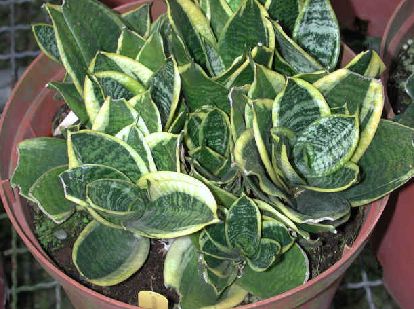
Caring for growing Sansevieria Trifasciata indoors
If your Sansevieria Trifasciata is not doing as nicely as you'll like, do not worry. Sansevieria Trifasciata are hard and resilient. Many frequent Sansevieria Trifasciata issues reply to a rapid and easy fix:
Yellow Sansevieria Trifasciata leaves sign overwatering. Allow the plant to dry out entirely and get your watering on track. Remove lifeless leaves at the base.
Sansevieria Trifasciata root rot displays itself as soft, mushy, discolored leaves. Yellow-white roots are healthy; darkish pungent roots are not. To attempt again, divide the plant. Replant leaves with firm, healthful roots in clean new soil and discard the rest.
Brown Sansevieria Trifasciata guidelines can sign numerous things: fallacious watering, sunburn, publicity to bloodless or more. Go through your plant care checklist, then make corrections proper away.
Sansevieria Trifasciata falling over is not usually bad. Sansevieria Trifasciata might also splay open when they want repotting or extra light. If it's the case, proceed. If Sansevieria Trifasciata leaves are collapsing, superior root rot may additionally be to blame. Examine the roots and act accordingly.
Discolored or broken snake plant suggestions on healthy, company leaves can be trimmed. Use sharp plant shears and comply with the leaf form cautiously to maintain a herbal look. Sansevieria Trifasciata leaves give up developing when guidelines are damaged or cut.
If you prefer, reduce the broken leaf returned to the soil and wait for a new leaf to come up.
By viewing the steps of growing and caring for Sansevieria Trifasciata, you can experience these low-maintenance wonders for many years.
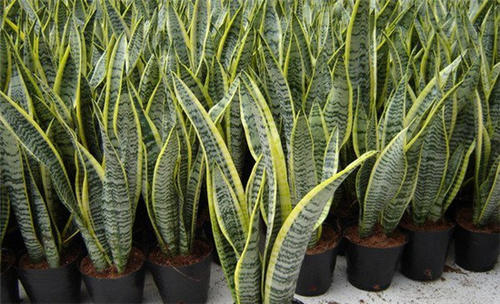
Check our article on 35 Most Common House Plants with Pictures & Care Guide
Latest Updated
- Benefits of Bugleweed - 7 Science-backed Health Benefits
- Bugleweed Dangers & Side Effects - Is It Poisonous?
- How to Plant Evergreen Trees - What You Should Know
- When to Plant Evergreens - Grow Guide for Evergreen Trees
- 12 Wonderful Evergreen Shrubs for Your Garden
- 12 Popular Evergreen Plants with Pictures for Beginners
- When And How To Prune A Lilac Bush Like a Pro
- How to Grow & Care for Lilac Vine (Hardenbergia Violacea)
- Japanese Lilac Tree (Syringa Reticulata) Care & Propagation Guide
- Shumard Oak Pros and Cons - What to Know
Popular Articles
- Winter maintenance of Antirrhinum Majus
- How to Grow Terminalia Mantaly Tree
- How to Grow and Care for Crossostephium Chinense
- How to grow Antirrhinum Majus in spring
- Peristeria Elata (Dove Orchid) Profile: Info & Care Guide
- Underwatered Snake Plant (Sansevieria Trifasciata) - Signs And How To Fix
- How to Care for Brazilian Jasmine Plant (Mandevilla Sanderi)
- How to Grow & Care for Graptopetalum Purple Delight in Summer
- Rosa Chinensis (China Rose): Plant Growing & Care Tips
- How to Care for Baby Sun Rose (Aptenia Cordifolia)